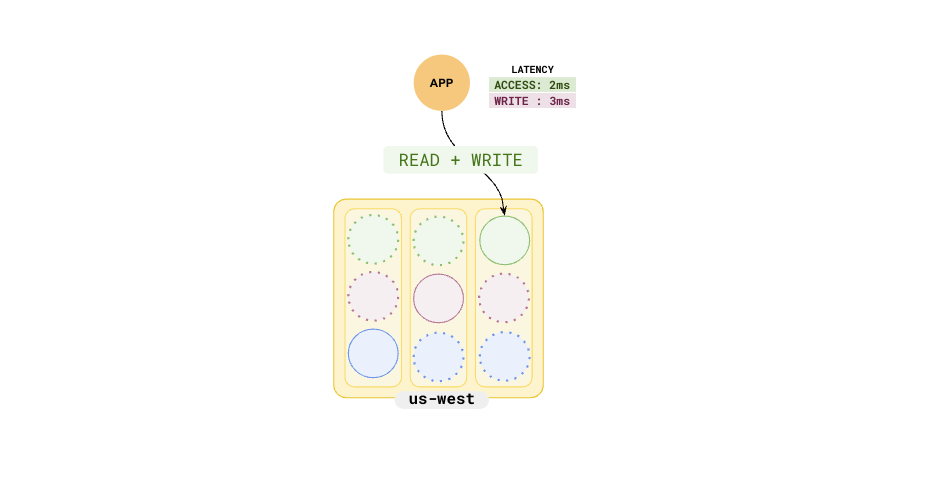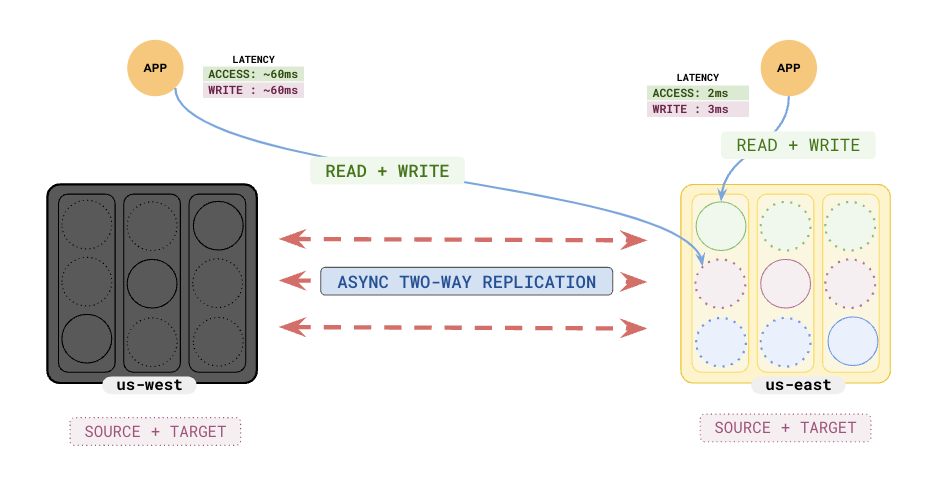Active-active multi-master
For applications that have to be run in multiple regions, you can adopt the Active-Active Multi-Master pattern, where you set up two clusters in two different regions, and both clusters actively take responsibility for local reads and writes and replicate data asynchronously. In this case, failover is manual and incurs possible loss of data, as the data is asynchronously replicated between the two clusters, but both reads and writes have low latencies.
Overview
Setup
To set up a local universe, refer to Set up a local YugabyteDB universe.Setup
To set up a universe, refer to Set up a YugabyteDB Anywhere universe.Suppose you have cluster with a replication factor of 3, and applications deployed in us-west.

This ensures that the reads and writes are in the same region, with the expected low latencies. Because the entire cluster is in a single region, in case of a region failure, you would lose all the data.
Multi-master
You can eliminate the possibility of data loss by setting up another cluster in a different region, say us-east, using xCluster.

The us-east cluster is independent of the primary cluster in us-west and the data is populated by asynchronous replication. This means that the read and write latencies of each cluster are not affected by the other, but at the same time, the data in each cluster is not immediately consistent with the other. You can use this pattern to reduce latencies for local users.
Transactional consistency
The Active-Active Multi-Master pattern does not guarantee any transactional consistency during the replication between the clusters. Conflicts are resolved in the bi-directional replication by adopting the "last-writer wins" strategy.
Failover
When one of the clusters fails, say us-west, the other cluster in us-east can handle reads and writes for all applications until the failed region recovers.

Caveats
The replication happens at the DocDB layer, bypassing the query layer, and some standard functionality doesn't work:
- Avoid
UNIQUEindexes and constraints, as there is no way to check uniqueness. - Avoid
TRIGGERS, as the triggers won't be fired as the query layer is bypassed. - Avoid
SERIALcolumns as both the clusters would generate the same sequence (use UUID instead). - Schema changes are not automatically transmitted but have to be applied manually (currently).
- Transaction updates are NOT committed atomically across sources and hence the other cluster could be transactionally inconsistent.